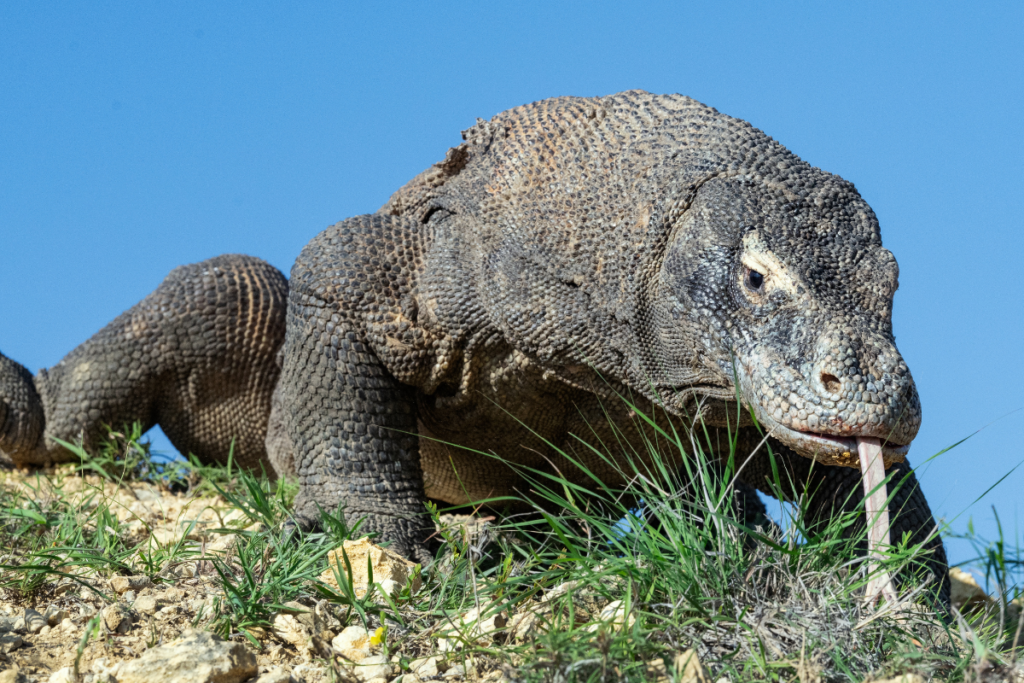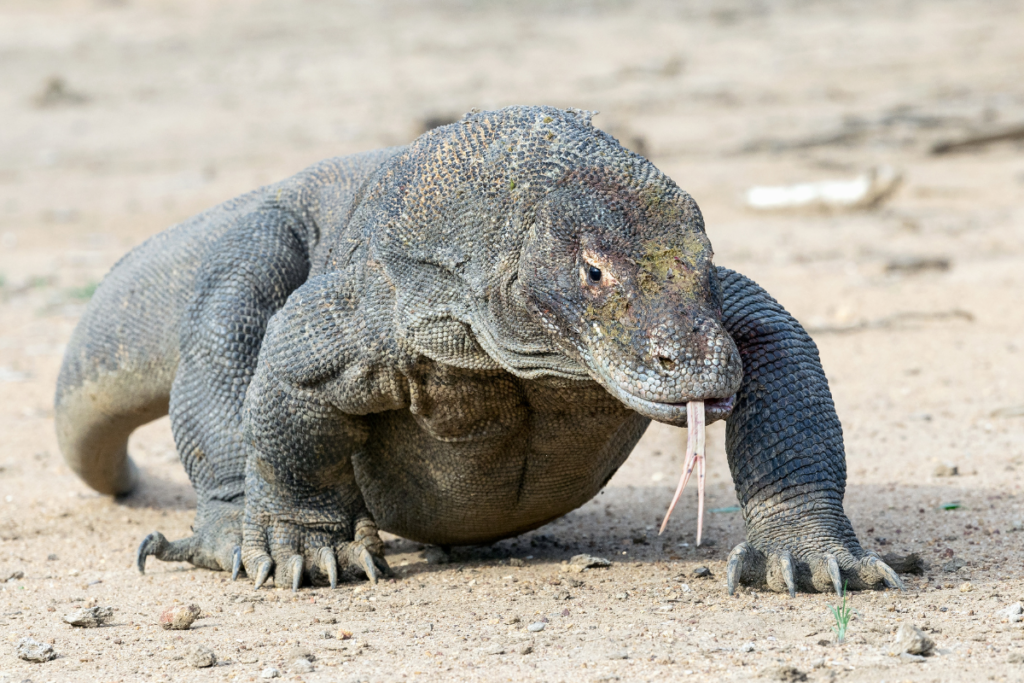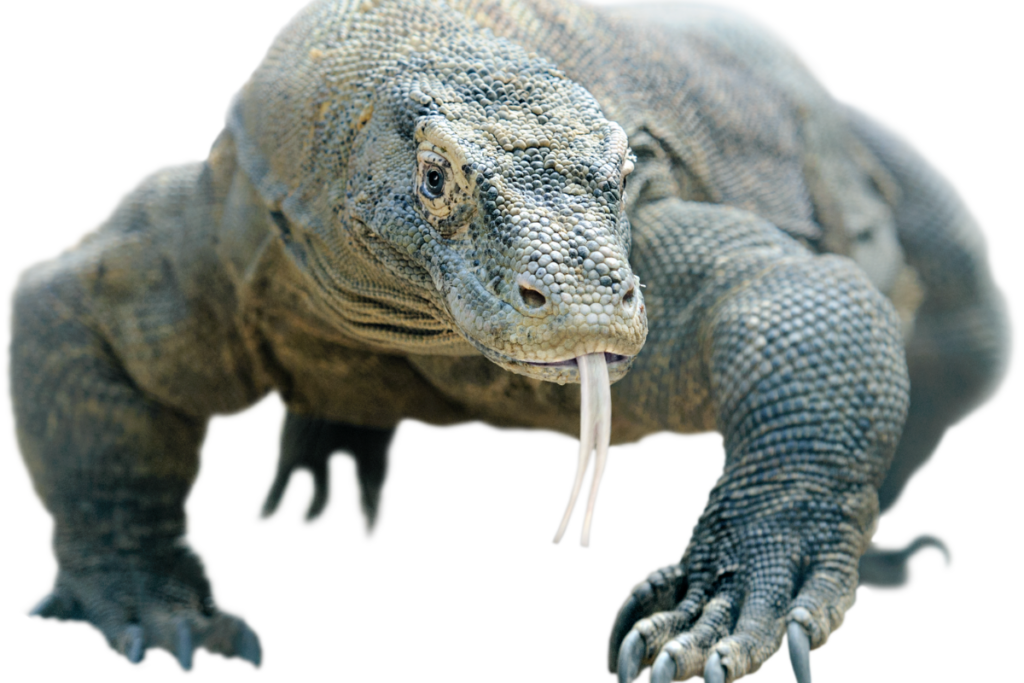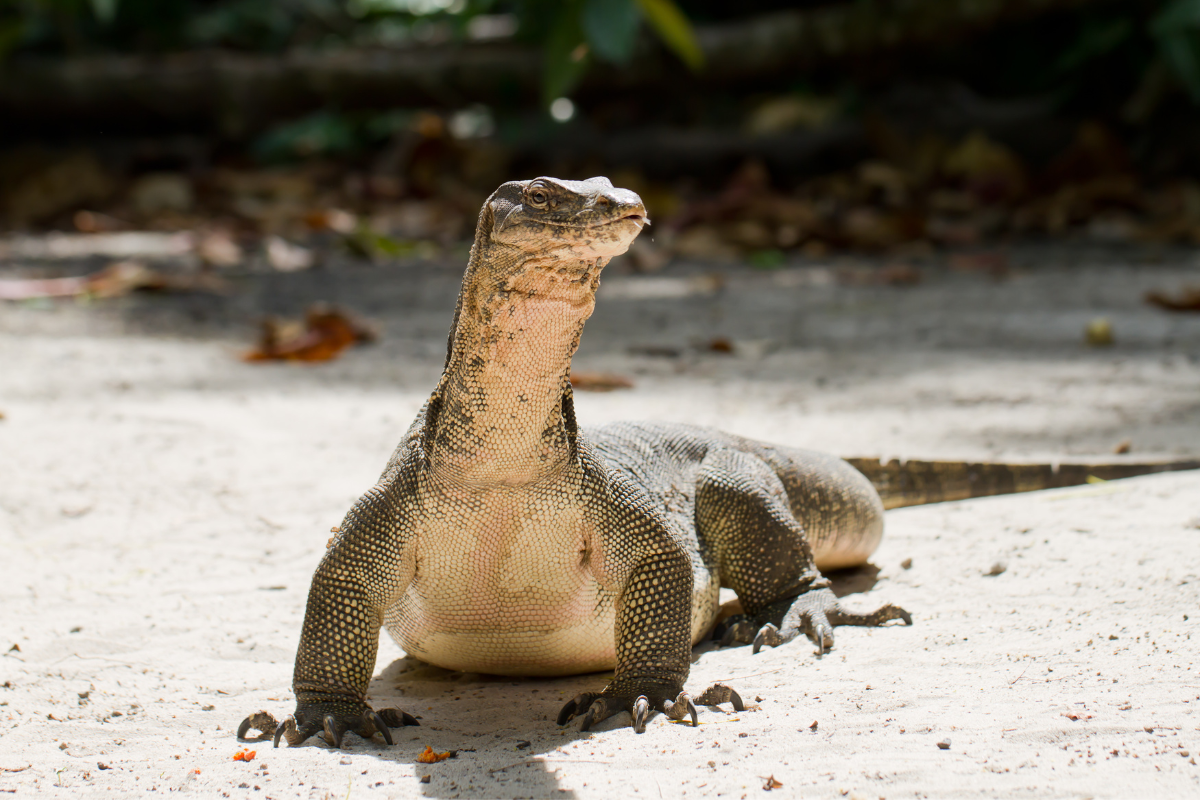In the remote islands of Indonesia, a creature roams that seems plucked from the pages of prehistory: the Komodo dragon (Varanus komodoensis).
Revered as modern-day dinosaurs, these magnificent reptiles embody a legacy of survival and adaptability in a rapidly changing world.
Origins and Evolution

The Komodo dragon’s lineage dates back millions of years to a time when giant reptiles dominated the Earth.
Belonging to the monitor lizard family, these creatures evolved in isolation on the islands of Komodo, Rinca, Flores, Gili Motang, and Padar, where their formidable presence has earned them both respect and awe.
Physical Characteristics
Komodo dragons are the largest living lizards, capable of reaching lengths exceeding three meters and weights up to 70 kilograms.
Their formidable size and muscular build are complemented by razor-sharp teeth and claws, making them apex predators in their ecosystem.
Their scales, a mosaic of earthy tones ranging from grey to brown, provide effective camouflage in the savannah and forests they call home.
Behavior and Habitat

These solitary creatures are primarily terrestrial but are capable swimmers, aiding their survival in island habitats.
Komodo dragons are opportunistic hunters and scavengers, preying on a variety of animals, including deer, birds, and even smaller dragons.
Their keen sense of smell enables them to detect carrion from great distances, contributing to their reputation as efficient scavengers.
Reproduction and Lifecycle

Komodo dragons reach sexual maturity around eight years of age, with females capable of reproducing through parthenogenesis, a rare phenomenon in vertebrates where females can produce offspring without mating.
After laying a clutch of 20-30 eggs in burrows, females diligently guard their nests until hatching, typically after eight months.
Young dragons face significant risks from predators and cannibalistic adults, ensuring only the strongest survive to adulthood.
Conservation Challenges
Despite their fearsome reputation, Komodo dragons face numerous threats to their survival.
Habitat loss due to human encroachment, poaching, and natural disasters jeopardize their fragile existence.
Conservation efforts are critical in preserving these living relics, with initiatives focusing on habitat protection, captive breeding programs, and community education to foster coexistence between humans and dragons.
Cultural Significance
Komodo dragons hold a prominent place in Indonesian folklore and culture, symbolizing strength, resilience, and the mystical allure of nature.
Their presence attracts ecotourists from around the world, contributing to local economies and raising awareness about the importance of conservation.
Conclusion
In the twilight of the age of dinosaurs, the Komodo dragon stands as a testament to the resilience of ancient lineages in the face of modern challenges.
As ambassadors of Indonesia’s biodiversity, these majestic reptiles remind us of the intricate balance between wildlife conservation and human development.
Preserving their habitats and respecting their role in ecosystems ensures that future generations will continue to marvel at these living relics from Earth’s distant past.
This article encapsulates the majestic nature and challenges facing the Komodo dragon, highlighting its role in both natural history and modern conservation efforts.






Leave a Reply